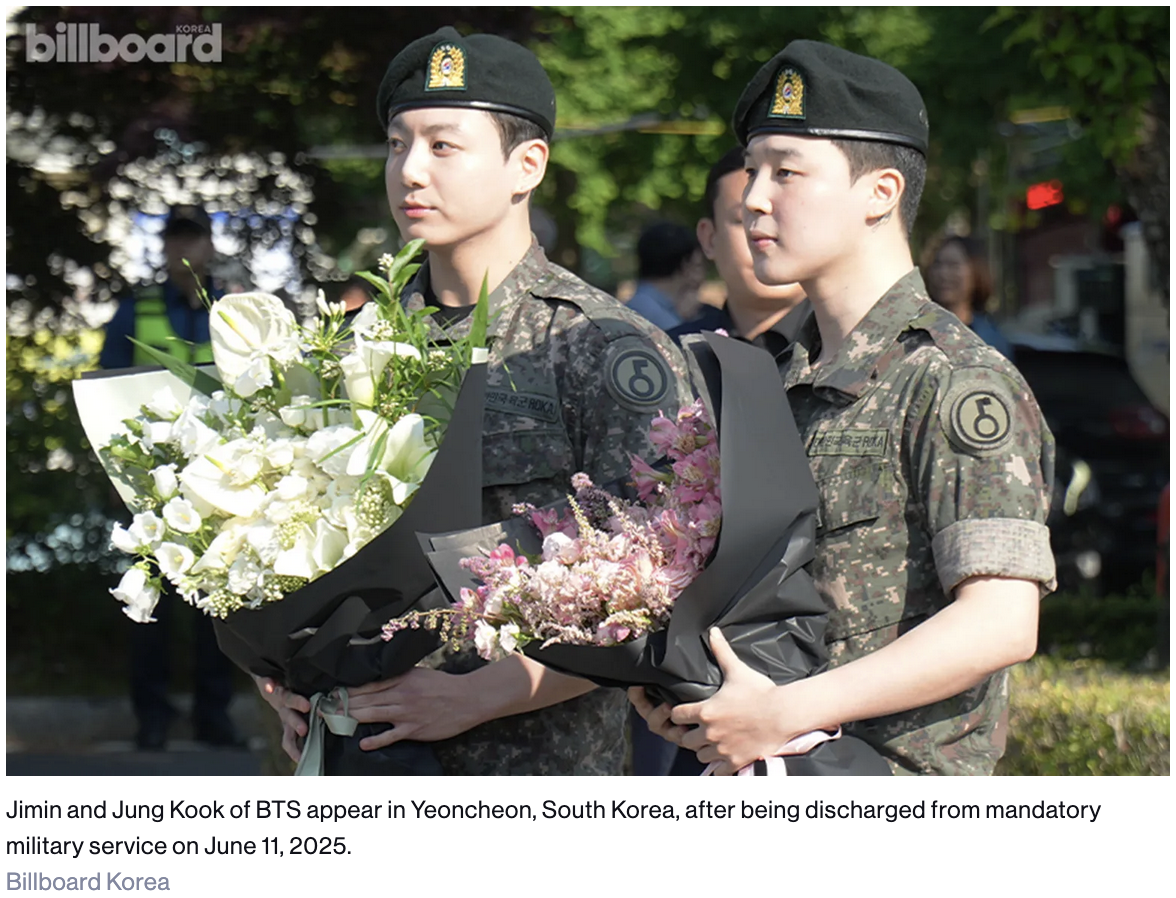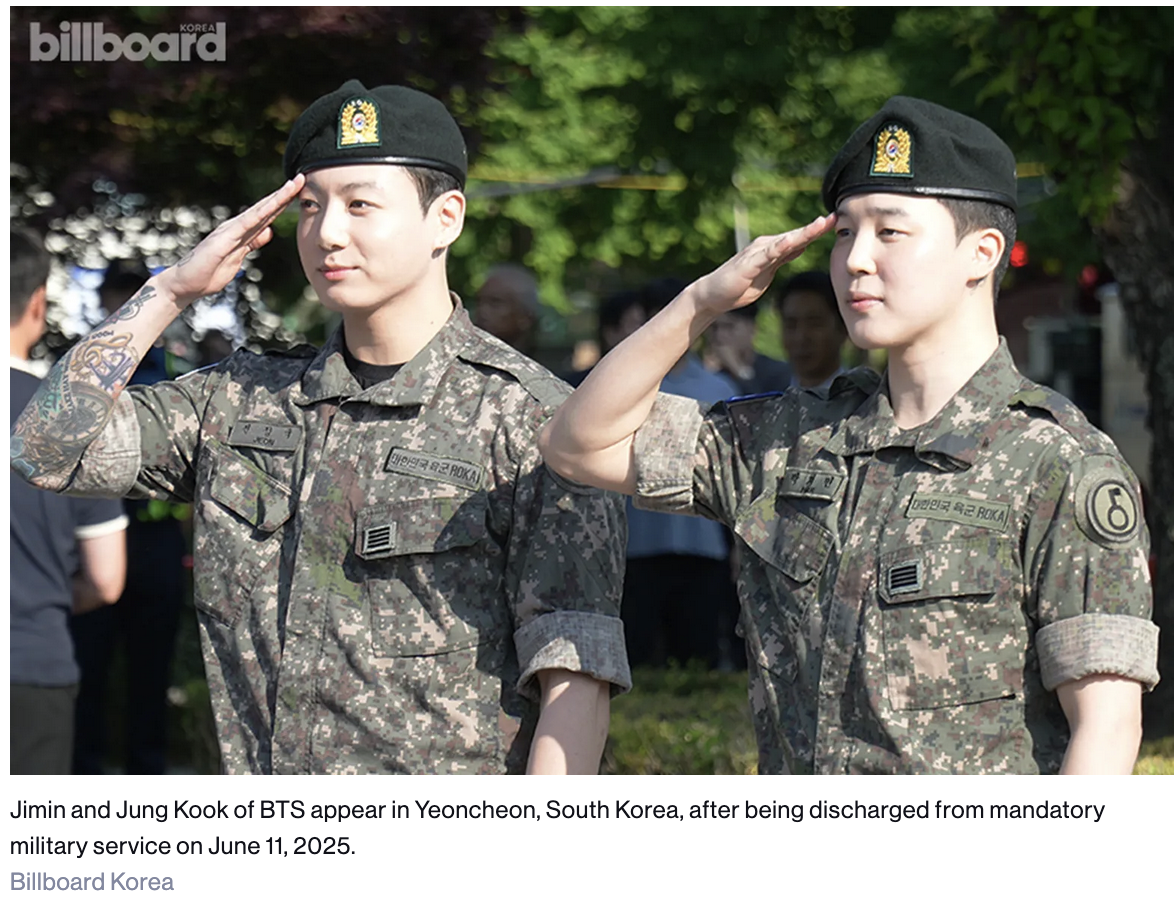The Bow
According to wikipedia, "Bows are the traditional greeting in East Asia, particularly in Japan, Korea, China, and Vietnam. Bowing is not reserved only for greetings; it can also be used as a gesture of respect, with different bows used for apologies and gratitude." Therefore, to show proper respect, you should bow to someone from this cultural background. Keep in mind, the bow also depend on your status relative to the person you are bowing to (to determine whether you bow higher, same, or lower than the person you are addressing).
Based on my specific background (Vietnamese) and my upbringing, I learned to bow with my hands to the side or in a folding manner in front of my chest along with my head tilted down (toward people of my specific culture). This is 1 example. Moreover, I also learned to bow in a Japanese manner because of my Judo background (Japanese grappling martial art).
Note: This concept may take time to grasp because "it's culture" (what was, is, and will forever be), especially if you are Anglo American (European ancestry), African American (descended from slaves or otherwise), or Hispanic American because you may be distant from Europe or Africa (many generations removed from the "old world", culturally and/or physically). To Asian people from this cultural background, especially the elders, who immigrated to the United States (new world) or otherwise (old world), outside of the native homeland many years ago, it means a lot to them when you bow (physically, mentally, and culturally). This is the "old ways" (language and culture).
Age and Social Status:
The Korean language is sensitive to age and social status, a distinction marked by which sentence ending is used.
For example, the sentence ending -yo is used to show respect (politeness/formality) to someone older or of higher social status than you. The -yo depends on who you are speaking to.**
Example: Person A talk to Person B.
The syllable in front of -yo,"-se", is called the "subject honorific". It indicates the subject of the sentence is being honored. The -se depends on who you're talking about.** It is used when talking about a person who is in a position of respect.
Example: Person A and B talk about person C.
You can drop the last syllable -yo to turn a polite form of address into nonpolite/informal form. The nonpolite/informal form is only used for close friends or someone younger than you.
Example of Polite (Formal) vs Non-Polite (Informal):
Polite: 안녕하세요 (Annyeonghaseyo)
Non-Polite: 안녕 (Annyeong)
Disclaimer: For (Annyeonghaseyo), this word is an exception where you remove the entire ending. Also (Annyeonghaseyo) has multiple meaning: Hello, How are you?, Good morning/afternoon/evening, and Good-bye.
Korean National Police Agency Mascot:
Source: Namuwiki
Note: Edited for clarity
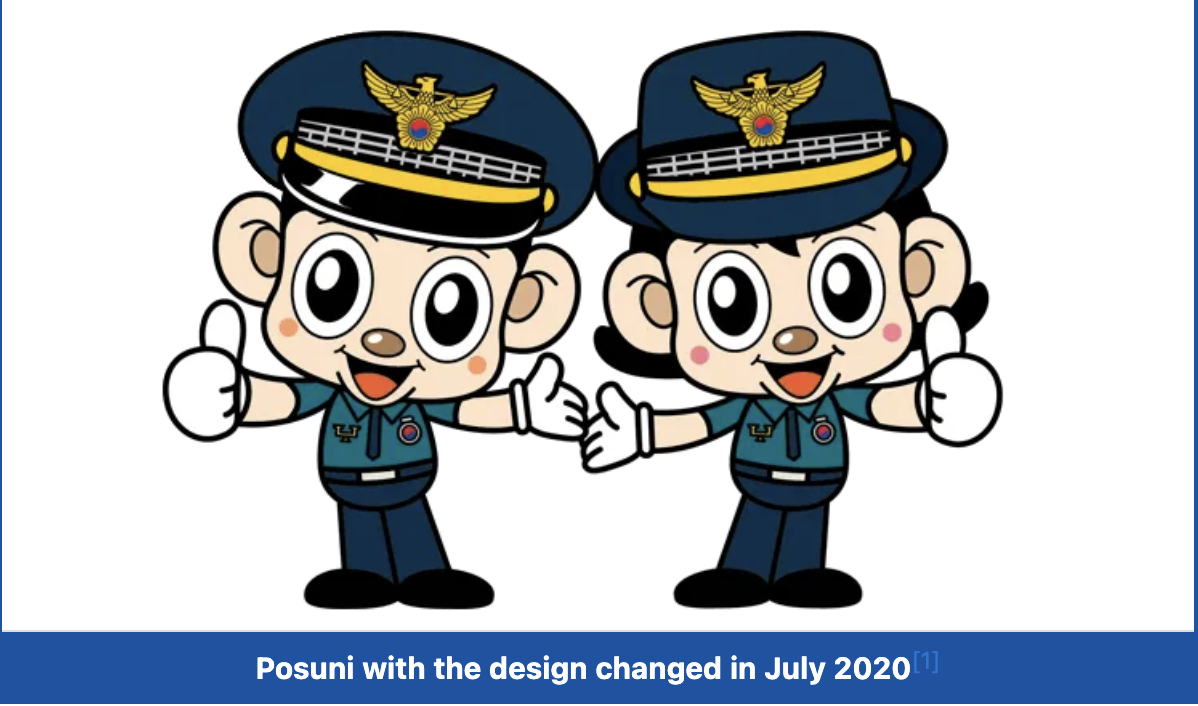
Mascot of the Korea Police Agency. Male character Podoli and female character Posuni. 'Po' in Posuni and Podori is derived from 'PO', the initials of POLICE, and symbolizes the police. The motif is not a specific animal, but a fictional animal. Many people mistake them for dogs or monkeys or rats. Kim Seok-ki said that the police, who were seen as authoritative, "must approach the public in a friendly way." At the time, the head of the crime prevention guidance department at the Seoul Regional Office.
Note: South Korea has a history of being ruled directly or indirectly under a military government (military dictatorship) since the partition of the Korean peninsula.
Mascot History
Note: Edited for clarity
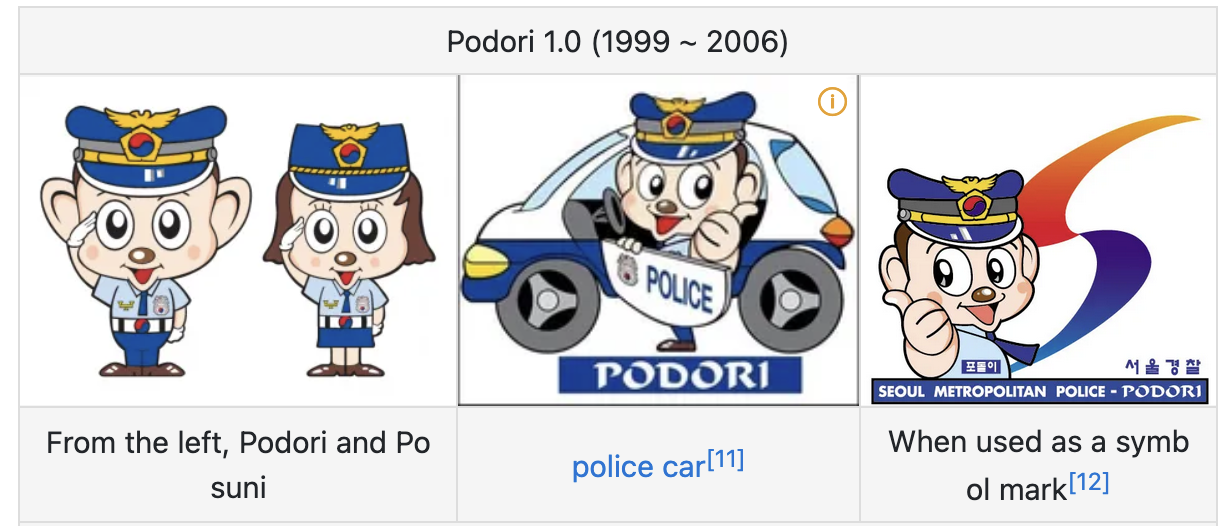

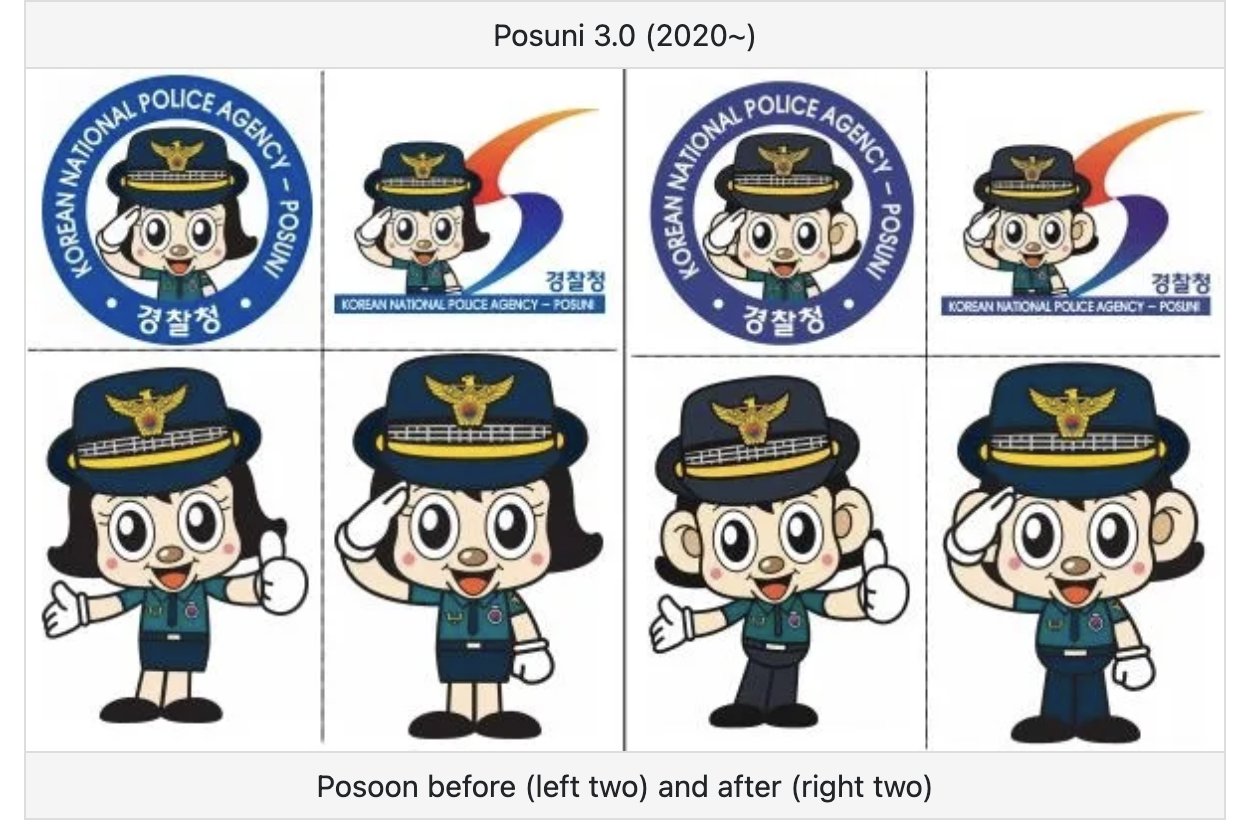
Each body part has its own meaning. The big ears contain the meaning of preventing various crimes by listening to the voices of the people without omission and quickly and accurately collecting the public safety situation. The big eye means to prevent crimes in advance by patrolling every corner of the country. Big head means that you will become a 21st century advanced police officer who uses your head and goes forward. A bright smiling face symbolizes the determination to always provide kind and satisfactory public security services as a public servant who breathes together with the people. The appearance of two arms and arms open signifies an attitude of standing up to any injustice or lawlessness without backing down. The thumb signifies the determination to become the number one police force in the world.
Police Doll
Note: Edited for clarity
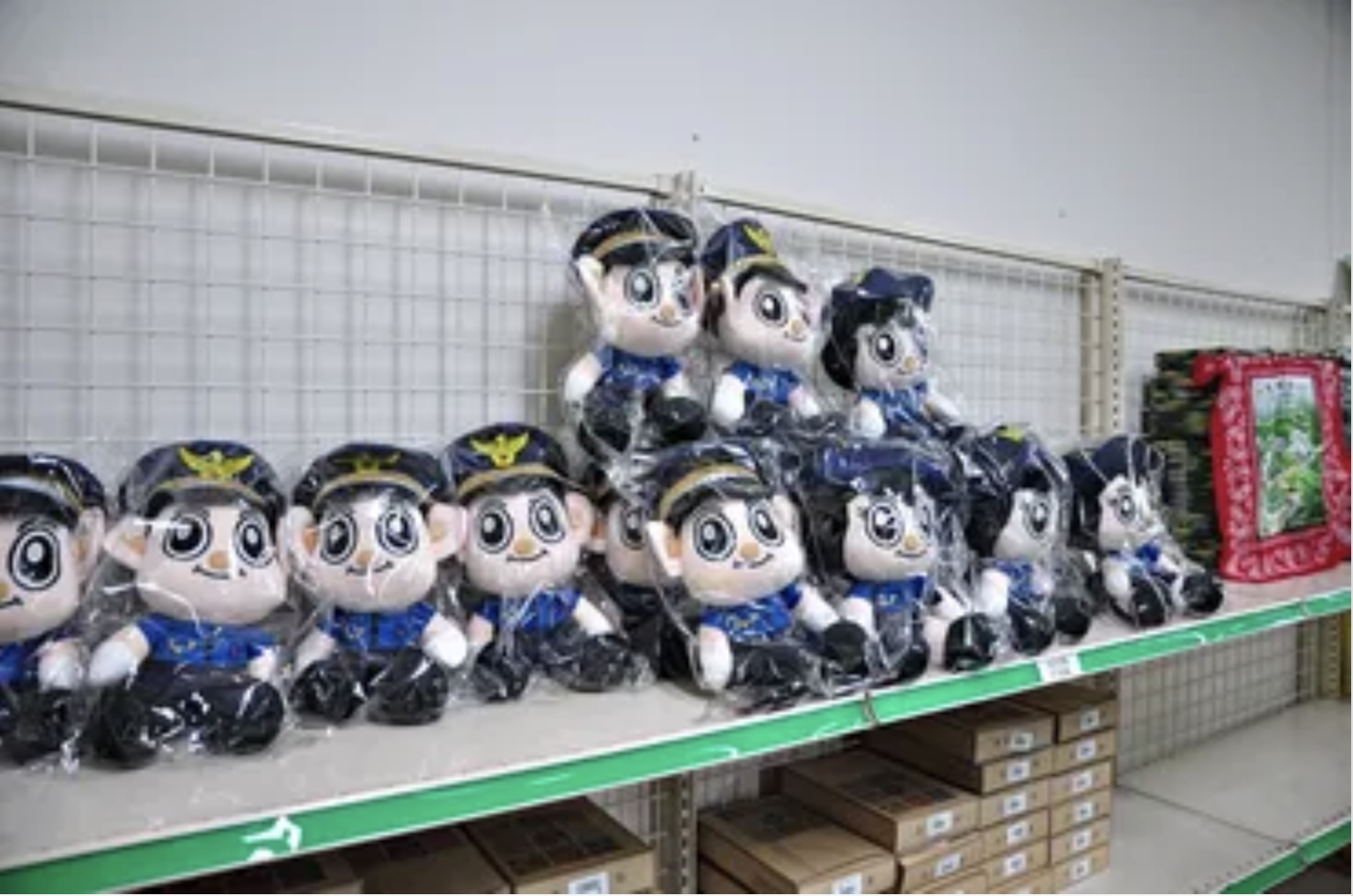
They also sell dolls. Podori and Posoon are both on sale, but they are not sold in the market and can only be obtained at the stationery store in the basement of the National Police Agency, the canteen at the Police Human Resources Development Center, and the Police Academy. Sometimes, it seems to be presented as a souvenir for children.
Importance of Mascot
It is believed that both within the National Police Agency and in police science, the doll has successfully contributed to improving the image of the police. Police officers wear Posuni and Podol doll masks to promote the police, and often appear at local events such as the National Singing Contest. In particular, the promotional effect on children is noteworthy. Of course, as I get older, my image of the police takes on a dual character, with the friendly appearance of Podori and the not-so-friendly appearance represented by detective films. I don't know if I would change the image of the police, which was represented by the so -called 'Sum -Sae', but it is active as a 'mascot' anyway. The pronoun of the police has been changed from Posun to Posun and Podol. In most current affairs cartoons or satirical works, the police are expressed as podori.
Lotte World (Korean Disneyland):
According to the Lotte World website, "LOTTE WORLD is the First in Korea, and the world's largest indoor theme park. LOTTE WORLD is the complex life space where you can experience anything you want."


Hanbok (Traditional Korean dress):
Source: Victoria and Albert Museum
Author: Jenny (Jon Young) Kim / 김전영
Note: Edited for clarity
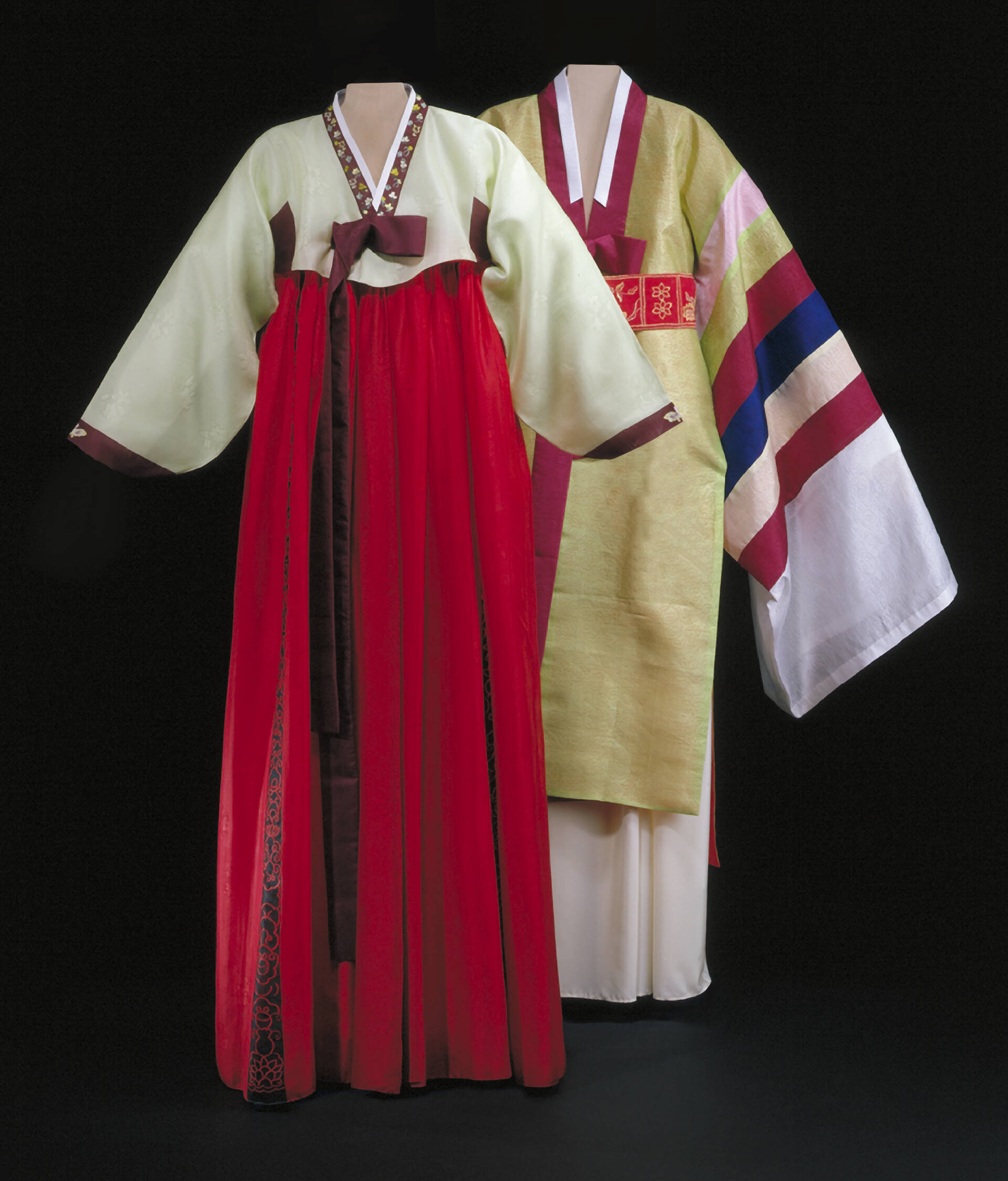
Simply meaning 'Korean clothes', 'hanbok' was introduced in the late 19th century by Koreans as a term to help differentiate their everyday dress from a recent influx of western-style clothing. A century later, western clothing had overtaken hanbok as the main style of dress worn by Koreans. In turn, hanbok became regarded as more of a ceremonial dress reserved for traditional holiday celebrations and events, such as first birthdays, weddings, and funerals. Hanbok, in the public's eye, had become less approachable and more formal.
However, recent efforts to revive hanbok as clothes to wear on any ordinary day have begun to find some success. The Korean government has been active in supporting and promoting hanbok, designating October 21st as Hanbok Day and officially recognising hanbok saengwal - the practice of making, wearing and enjoying hanbok - as a National Intangible Cultural Heritage. A new generation of fashion designers have emerged that are reinventing hanbok for new audiences. Through their collaborations with K-pop groups and K-dramas, these modern designers have brought new life to hanbok and added international interest as Korean culture continues to proliferate on a global stage.
History and influence
The history of hanbok goes hand in hand with the history of human civilisation on the Korean peninsula. Hanbok does not describe a certain design or shape of clothes, but serves as an umbrella term that encompasses thousands of years of Korean clothing. As such, hanbok design has shifted across the ages, with fluctuating sleeve lengths and widths, silhouettes, and dress folds, among other evolving design details.
Hanbok continued to evolve in a uniquely Korean way, slowly morphing into a version during the Joseon Dynasty (1392 - 1910) that we are most familiar with today.
Conveying social identity through hanbok
Variations in hanbok from the Joseon Dynasty were used to signify an individual's gender, social class, marital status, and age - directly reflecting neo-Confucianist values prevalent at the time and its emphasis on maintaining social roles to achieve societal harmony. For example, the hanbok below, consisting of a white jacket and blue skirt, was considered suitable for a married woman to wear. Traditionally a woman of comfortable means would wear an undyed white ramie jacket, an indigo-dyed skirt of ramie, and under-garments also of undyed ramie.
Hanbok today
Although Joseon-era styles continued to influence hanbok in the 20th century, new hanbok designers such as Lee Young-hee, Young Jin (Tchai) Kim, Park Seon-ok (Guiroe) and Danha Kim (Danha) have revived this centuries old way of dress. Breaking down the neo-Confucian gender, social rank, and status divide, many of these new hanboks emphasise the aesthetic qualities of hanbok, such as its colours, shapes, and lines. As the popularity of Korean pop culture grows around the world, hanbok has inspired everyone from K-pop fans who have discovered hanbok for the first time on YouTube to Karl Lagerfeld designing the 2015/16 Chanel Cruise collection. Hanbok's addition into the Oxford English Dictionary in 2021 attests to its establishment within global cultural knowledge. Although hanbok was named after the people and land it was originally worn in, it can no longer be solely defined by the identity or geography of its wearers who today, come from all corners of the world.
Hanbok Photos from Wikimedia Commons:
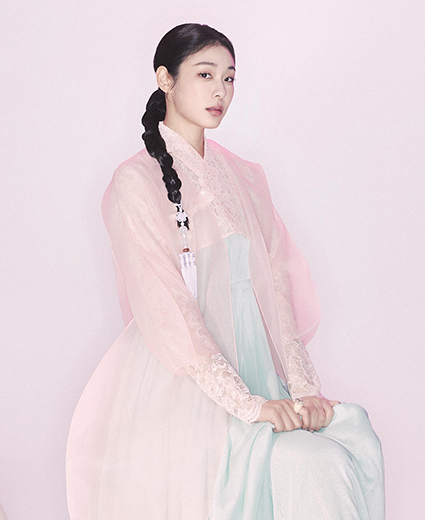
.png)
.jpg)
A Brief History of K-pop:
Source: The Los Angeles Film School
Note: Edited for clarity
When did K-pop become popular?
Musical acts made up of attractive and talented young people have been a reliable recipe for success for decades. One Direction reigned in 2010, the rivalries between Britney Spears and Christina Aguilera defined pop music in the '90s, and New Kids On The Block was an '80s acid-wash teen dream. But on November 19, 2017, the K-pop band BTS took to the AMA stage for their first-ever U.S. performance and shook the American music industry. BTS would go on to set the record for most Twitter engagements, grace the cover of Rolling Stone Magazine, record with Lil Nas X on Old Town Road (Seoul Town Road Remix), sing carpool Karaoke, and solidify their international stardom. The Korean Wave that started in the '80s finally crested over the United States.
What is K-pop?
K-pop or Korean Pop is the internationally popular, aesthetic-driven, style-bending, trendsetting, music genre of the 21st century. Originating in South Korea, K-pop draws influence from a range of genres like pop, experimental, rock, hip-hop, R&B, electronic, and dance. The variety of influences is so vast there's a K-pop band or performer for every taste. There are massive girl groups like Girls Generation who produce straightforward pop hits. But if you like pop with rap breaks inspired by the rapid lyrical styles of Nicki Minaj then check out BLACKPINK. If your taste skews more alt, then the emo-stylized group F.T. ISLAND is for you. And if you want some slow and sensual R&B, g.o.d. has the jams. But, despite the genre-straddling K-pop is a thoroughly Korean genre. The tunes are inspired by traditional Korean music and the lyrics are in Korean with the occasional English sprinkled throughout.
K-pop Through The Years
The 1950s: The Kim Sisters were a Korea born pop music
trio who spoke no English but achieved fame in the U.S. by performing
soulful renditions of American pop songs completely phonetically.
The 1970s: A lot of this focus on activism can be
attributed to folk-rock singer and composer Kim Min-ki.
The 1990s: Seo Taiji and Boys is the first band that
resembles the K-pop music and mega fandom we have today.
First Generation K-pop ('90s-00): H.O.T is considered to
be the first true K-pop idol group because the group was highly
manufactured and made up of trained pop stars.
Second Generation ('00s-'10s):G.o.d (stands for Groove
Over Dose) debuted in 1999, leading into the second generation of
K-pop.
Third Generation ('10s-Present): The K-pop groups who are
dominating the charts today are the third generation. BTS, EXO,
Seventeen and BLACKPINK have taken over the music world with no signs
of stopping.
Importance of K-Pop
- Traditionally America exports culture but has been reluctant to import it.
- Entertainment in the U.S. is dominated by an anglo-centric (white centric) monoculture.
- For the first time in America, they are not anglo (white), they are Korean.
Disclaimer: The word "anglo" is added by me due to changing times. For more information, see: Anglo.
K-Pop and Mandatory Korean Military Service:
Note: Edited for clarity
"Jimin & Jung Kook Complete Military Service as BTS Reunion Nears: Exclusive Photos"
With their discharge, six of the seven BTS members have now completed their service obligations.
Source: billboard
YEONCHEON, South Korea — Jimin and Jung Kook of BTS were officially discharged from South Korea's mandatory military service on Wednesday (June 11), marking a major step forward in the group's long-awaited reunion.
